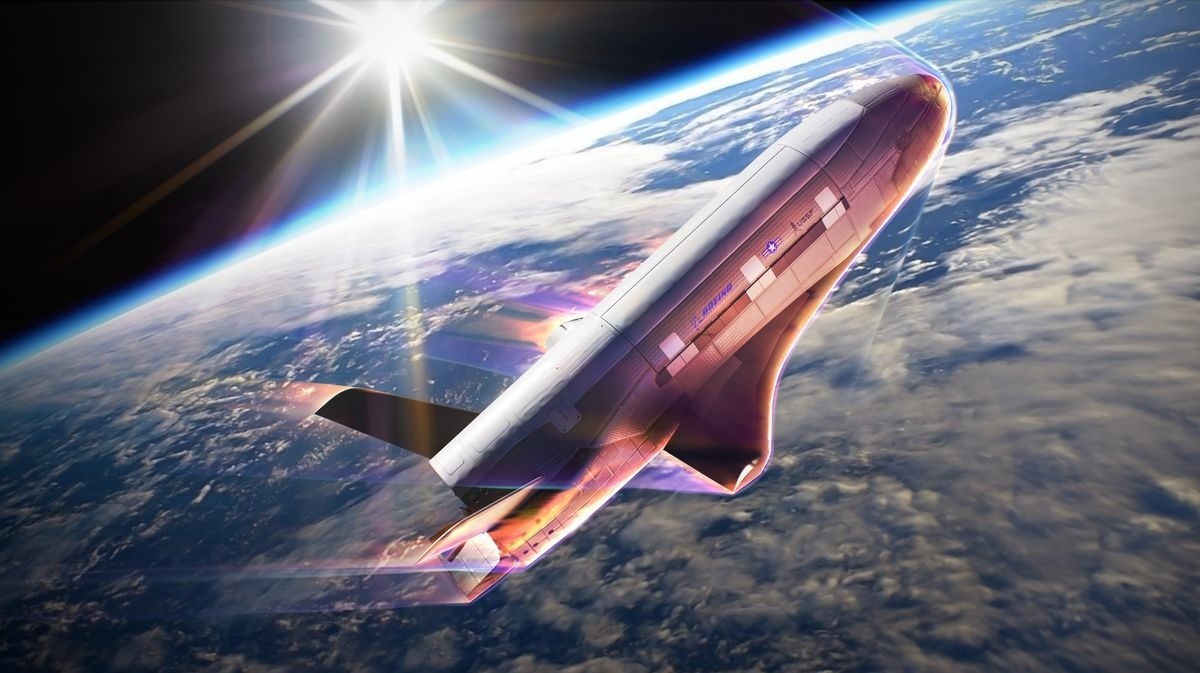6.11.2024
In a rare show of openness about the X-37B, Boeing Space released a video detailing how the space plane's aerobraking maneuvers help change its orbit.

'The U.S. military's highly secretive X-37B space plane just got a little less mysterious.
In a rare show of openness about the space plane's operations, Boeing and the U.S. Space Force released a statement last month explaining that the X-37B would soon begin a series of "aerobraking" maneuvers to begin lowering its orbit and safely disposing of unnecessary hardware before it comes down for a landing on Earth.
This week, Boeing Space released a video detailing how the aerobraking procedure will work and why the X-37B is performing it. In the video, a Boeing representative said the maneuver will help Boeing change the X-37B's altitude and "safely dispose of the service module components in accordance with recognized standards for space debris mitigation."

Artist rendering of the U.S. Space Force's robotic X-37B conducting an aerobraking maneuver using the drag of Earth’s atmosphere. (Image credit: Boeing Space)
Typically, when satellites change orbit, they execute one or more burns using their onboard thrusters. This requires propellant, however, meaning each satellite can only perform a limited amount of burns before needing to be refueled or brought out of orbit. Aerobraking, on the other hand, uses the friction of Earth's atmosphere to help guide a spacecraft to a new orbit.
"When we aerobrake, we utilize atmospheric drag to effectively step down our apogee one pass at a time until we get to the orbital regime that we want to be in," said John Ealy, a Boeing engineer, in the company's video explaining the X-37B's aerobraking. "When we do this, we save enormous amounts of propellant, and that's really why aerobraking is important."
Boeing's video about the aerobraking maneuver shows the aircraft-like X-37B changing its attitude, or the direction in which it faces relative to its orbital direction, so that its flat "belly" points forward as it orients its nose up, facing away from Earth below it.
In the animation, the broader, flatter underside of the space plane glows orange from the heat generated as it encounters the drag (a type of friction) produced by Earth's atmosphere, which slows it down.
U.S. Space Force leadership praised the X-37B team for attempting such a novel maneuver. "This first of a kind maneuver from the X-37B is an incredibly important milestone for the United States Space Force as we seek to expand our aptitude and ability to perform in this challenging domain," U.S. Chief of Space Operations Gen. Chance Saltzman said in a statement last month. "The success is a testament to the dedication and perseverance of the team."
The X-37B's most recent mission, known as OTV-7 (for "Orbital Test Vehicle-7"), saw the space plane launch atop a SpaceX Falcon Heavy rocket for the first time, which put the space plane on a highly elliptical (or oval-shaped) orbit at an unknown altitude.
Like all other X-37B flights, little is known about the OTV-7 other than that the flight is testing the effects of space radiation and "space domain awareness" technologies, presumably meaning new tech to help the U.S. Space Force keep an eye on orbital traffic and what other spacecraft are doing in Earth orbit.
"X-37B missions have continuously advanced our nation's space capabilities by testing new technologies that reduce risk and inform our future space architectures. Mission seven is no different," Holly Murphy, program director for Boeing's Experimental Systems Group, said in the video.
Quelle: SC
